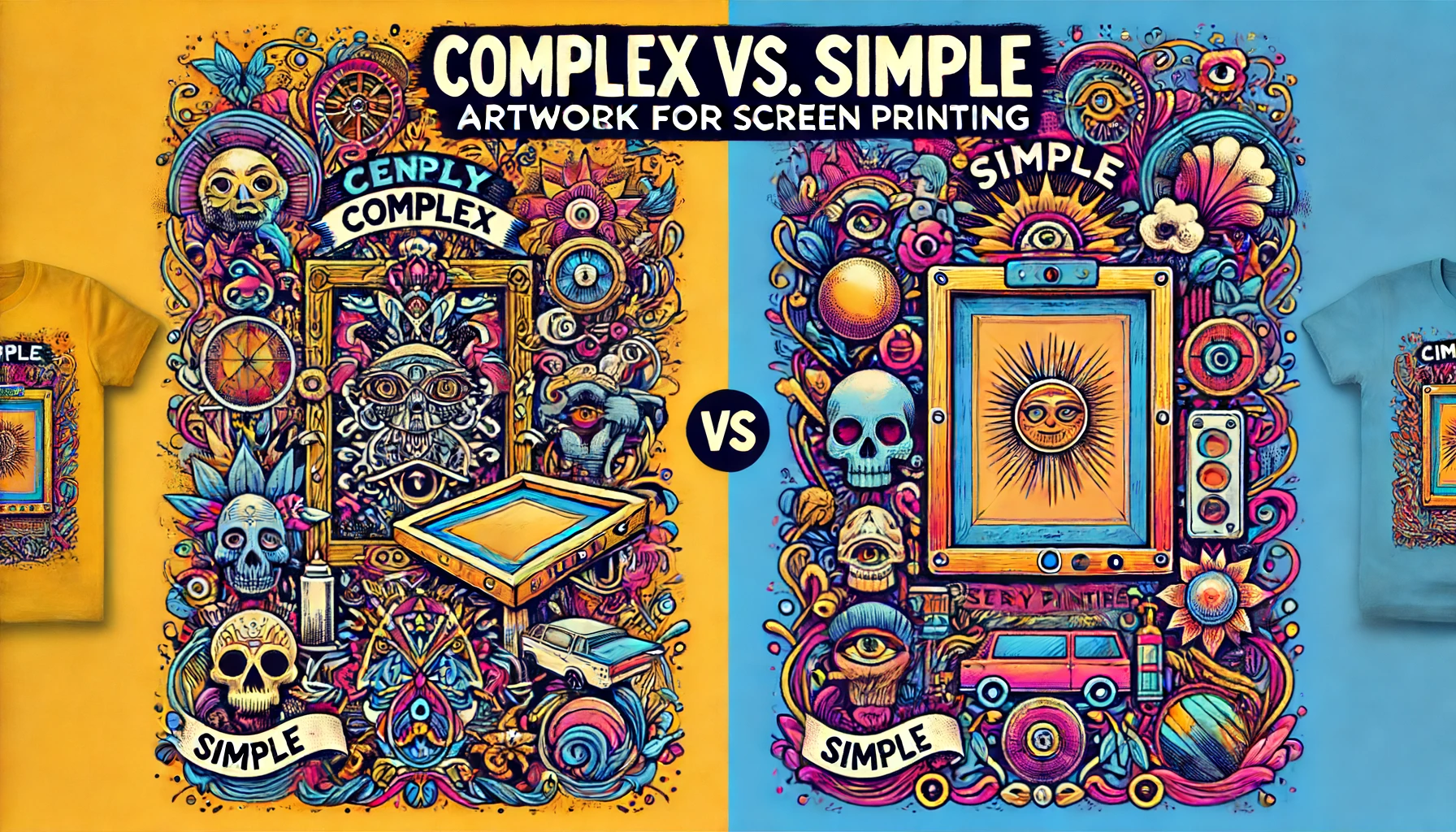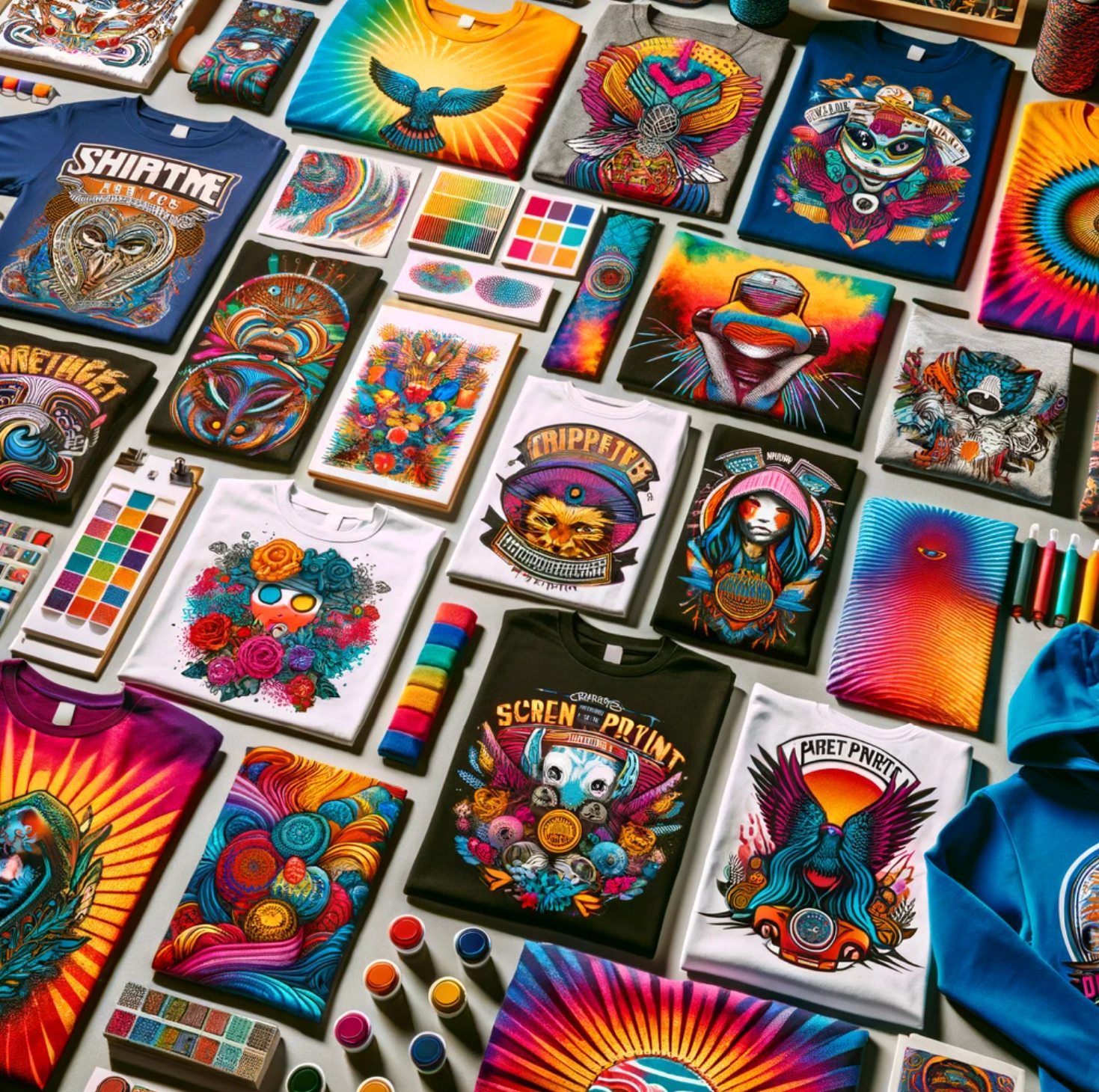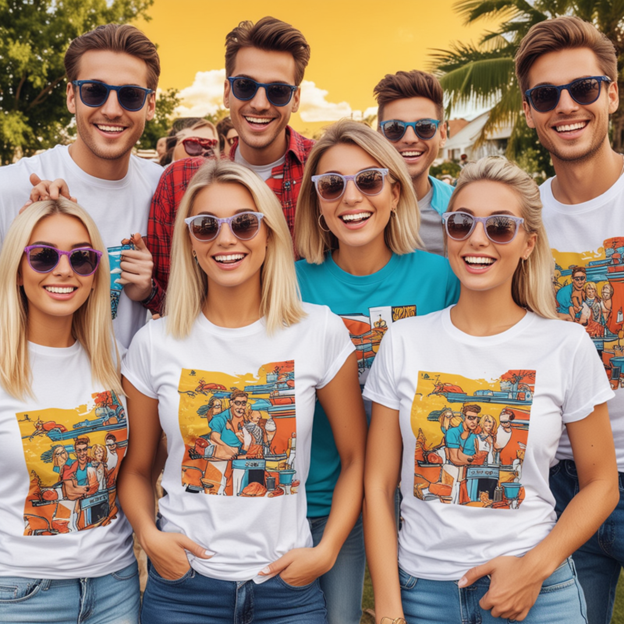Clothing has always been an essential aspect of human civilization, not just for its functional purpose but also as a form of self-expression. Among the myriad of fabrics available, cotton and tri-blend have garnered significant attention in the fashion industry due to their unique characteristics and versatility. In this comprehensive analysis, we delve into the differences between 100% cotton shirts and tri-blend shirts, exploring their manufacturing processes, properties, advantages, and disadvantages.
Understanding Cotton Fabric
Cotton, a natural fiber derived from the cotton plant’s seedpods, has been a staple textile for centuries. It is prized for its softness, breathability, and durability, making it a preferred choice for various apparel items, including shirts, T-shirts, and other casual wear. The production process of cotton fabric involves several stages, including cultivation, harvesting, ginning, spinning, weaving, and finishing.
Cultivation: Cotton cultivation begins with planting cotton seeds in well-prepared soil. The plants require adequate sunlight, water, and nutrients to grow optimally. Depending on the climate and region, different varieties of cotton are cultivated, each with distinct fiber properties.
Harvesting: Once the cotton plants reach maturity, typically within 6 to 7 months, they are harvested. This involves picking the cotton bolls by hand or using mechanized equipment, depending on the scale of cultivation.
Ginning: After harvesting, the cotton bolls undergo the ginning process to separate the seeds from the fibers. This is typically done using a cotton gin, a machine that removes the seeds while preserving the long cotton fibers.
Spinning: The ginned cotton fibers are then processed through spinning machines to form yarns. During spinning, the fibers are drawn out and twisted to increase strength and cohesion, resulting in yarns of varying thickness and quality.
Weaving: The spun yarns are woven into fabric on looms. This process involves interlacing the yarns at right angles to create a stable and uniform textile structure. Cotton fabric can be woven in different patterns, such as plain weave, twill weave, or satin weave, each imparting unique characteristics to the fabric.
Finishing: After weaving, the cotton fabric undergoes finishing processes to enhance its properties and appearance. This may include treatments such as bleaching, dyeing, printing, and softening, depending on the desired end product.
Properties of 100% Cotton Shirts
100% cotton shirts are made entirely from cotton fibers, without any synthetic or blended materials. As a result, they exhibit distinct properties that set them apart from other fabrics:
Softness: Cotton fibers are naturally soft and comfortable against the skin, making 100% cotton shirts ideal for everyday wear.
Breathability: Cotton fabric allows air to circulate freely, promoting ventilation and moisture absorption. This helps regulate body temperature and keeps the wearer cool and comfortable, particularly in hot and humid conditions.
Absorbency: Cotton has high absorbent properties, capable of absorbing moisture up to 20% of its weight without feeling damp. This makes cotton shirts suitable for activities that induce sweating, as they help wick moisture away from the skin.
Durability: Cotton fibers are relatively strong and durable, ensuring longevity and resistance to wear and tear with proper care.
Versatility: Cotton fabric is highly versatile and can be easily dyed, printed, or embellished to create a wide range of designs and styles.
Understanding Tri-Blend Fabric
Tri-blend fabric is a blend of three different fibers: cotton, polyester, and rayon. This combination offers a unique balance of properties derived from each component, resulting in a fabric that is soft, lightweight, and drapey. The manufacturing process of tri-blend fabric involves blending the three fibers in specific proportions, followed by spinning, weaving, and finishing.
Blending: Tri-blend fabric typically consists of 50% polyester, 25% cotton, and 25% rayon, although the exact composition may vary depending on the desired characteristics. The blending process ensures that each fiber contributes its unique properties to the final fabric.
Spinning and Weaving: After blending, the fibers are spun into yarns and woven into fabric using similar processes as those employed in cotton fabric production. However, the presence of synthetic fibers such as polyester may necessitate modifications to the spinning and weaving parameters to ensure compatibility and uniformity.
Finishing: Tri-blend fabric undergoes finishing treatments similar to those applied to cotton fabric, including dyeing, printing, and softening. However, the presence of synthetic fibers may require specialized finishing processes to enhance durability, wrinkle resistance, and color retention.
Properties of Tri-Blend Shirts
Tri-blend shirts combine the best attributes of cotton, polyester, and rayon to offer a unique blend of properties:
Softness: Tri-blend fabric is exceptionally soft and smooth, thanks to the presence of cotton and rayon fibers. This makes tri-blend shirts comfortable to wear against the skin, with a luxurious feel that rivals pure cotton.
Lightweight: The addition of polyester and rayon fibers reduces the overall weight of tri-blend fabric, making it lightweight and airy. This enhances comfort and allows for greater breathability, making tri-blend shirts suitable for warm weather and active pursuits.
Drape: Tri-blend fabric has excellent drape characteristics, meaning it falls smoothly and elegantly on the body without clinging or bunching. This enhances the aesthetic appeal of tri-blend shirts and makes them flattering for various body types.
Moisture Wicking: Polyester fibers in tri-blend fabric offer superior moisture-wicking properties, helping to draw sweat away from the skin and promote evaporation. This keeps the wearer dry and comfortable during physical activities or in humid conditions.
Durability: The inclusion of polyester fibers enhances the durability and longevity of tri-blend shirts, making them more resistant to stretching, shrinking, and pilling compared to pure cotton shirts.
Comparison Between 100% Cotton Shirts and Tri-Blend Shirts
Having explored the properties and manufacturing processes of 100% cotton shirts and tri-blend shirts, let us now compare them across various parameters to determine their relative merits and drawbacks:
Comfort: Both 100% cotton shirts and tri-blend shirts offer exceptional comfort, albeit in slightly different ways. Cotton shirts are prized for their softness and breathability, making them ideal for everyday wear in a variety of climates. Tri-blend shirts, on the other hand, combine the softness of cotton with the lightweight and drapey qualities of polyester and rayon, resulting in a fabric that feels luxurious against the skin. Ultimately, the choice between the two depends on personal preference and specific comfort requirements.
Breathability: Cotton fabric is renowned for its excellent breathability, allowing air to circulate freely and moisture to evaporate quickly. This makes 100% cotton shirts ideal for hot and humid conditions, as they help regulate body temperature and keep the wearer cool and comfortable. Tri-blend shirts also offer good breathability, thanks to the presence of cotton and rayon fibers, although they may not be as effective as pure cotton shirts in extremely hot or humid environments.
Moisture Management: When it comes to moisture management, tri-blend shirts have a slight edge over 100% cotton shirts due to the presence of polyester fibers. Polyester is hydrophobic, meaning it repels water and facilitates moisture evaporation, helping to keep the wearer dry and comfortable during physical activities or in sweaty conditions. While cotton also has absorbent properties, it tends to retain moisture longer than polyester, which can lead to a damp or clammy feeling, particularly during intense exercise.
Durability: In terms of durability, tri-blend shirts have the advantage over 100% cotton shirts, thanks to the inclusion of polyester fibers. Polyester is known for its strength, resilience, and resistance to stretching, shrinking, and wrinkling, making tri-blend shirts more durable and long-lasting compared to pure cotton shirts. Additionally, the presence of polyester helps prevent pilling and fading, ensuring that tri-blend shirts retain their appearance and shape wash after wash.
Aesthetic Appeal: Both 100% cotton shirts and tri-blend shirts offer a wide range of aesthetic options, including different colors, prints, and designs. Cotton fabric is highly versatile and can be easily dyed, printed, or embellished to create various textures and patterns. Tri-blend fabric, with its unique blend of fibers, has a distinctive heathered appearance that adds depth and dimension to the fabric, giving tri-blend shirts a trendy and fashionable look. Ultimately, the choice between the two depends on individual style preferences and the desired aesthetic effect.
Environmental Impact: From an environmental perspective, 100% cotton shirts have a slight advantage over tri-blend shirts, as cotton is a natural and biodegradable fiber. However, cotton cultivation requires significant water, land, and pesticide usage, which can have adverse environmental impacts if not managed sustainably. Tri-blend shirts, on the other hand, contain synthetic fibers such as polyester, which are derived from petrochemicals and are not biodegradable. Additionally, the production of polyester involves energy-intensive processes that contribute to carbon emissions and environmental pollution. Therefore, both 100% cotton shirts and tri-blend shirts have environmental implications, and the choice between the two should consider factors such as sustainable sourcing, manufacturing practices, and end-of-life disposal.
In conclusion, both 100% cotton shirts and tri-blend shirts offer unique benefits and drawbacks, making them suitable for different preferences, occasions, and climates. 100% cotton shirts are prized for their softness, breathability, and comfort, making them ideal for everyday wear in a variety of conditions. Tri-blend shirts, on the other hand, combine the best attributes of cotton, polyester, and rayon to offer a fabric that is soft, lightweight, and durable, with enhanced moisture-wicking properties and aesthetic appeal. Ultimately, the choice between the two depends on individual preferences, specific requirements, and environmental considerations. By understanding the properties, manufacturing processes, and comparative analysis of 100% cotton shirts and tri-blend shirts, consumers can make informed decisions when selecting apparel that suits their needs and values.






